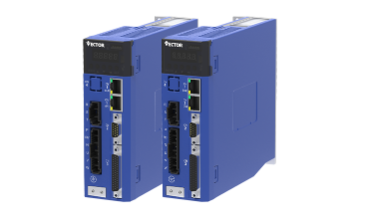In the field of modern industrial automation, servo system is a key driving technology, which can achieve high precision and high efficiency motion control. EtherCAT bus servo is an important development direction in the field of servo system, which integrates servo control technology and EtherCAT bus communication technology, bringing higher performance, stronger real-time and more flexible configuration for industrial applications.
What is EtherCAT Bus Servo?
EtherCAT (Ethernet for Control Automation Technology) is a high-performance, real-time industrial Ethernet communication protocol, which is widely used in the field of industrial automation. EtherCAT bus servo is a servo system based on EtherCAT communication protocol, which connects servo drivers, encoders, controllers and other devices through EtherCAT bus to realize real-time motion control and data exchange.
Characteristics and advantages
1. High real-time performance: EtherCAT bus servo adopts distributed control mode to achieve extremely low communication delay, which can meet the needs of high-speed and high-precision motion control.
2. Flexible configuration: Due to the characteristics of EtherCAT bus, flexible topology and device connection can be realized, simplifying system wiring and expansion.
3. Multi-axis synchronization: EtherCAT bus servo supports multi-axis synchronization control, which can achieve precise collaborative movement of multiple servo axes, suitable for complex mechanical systems.
4. Real-time diagnosis: EtherCAT bus servo can monitor equipment status and performance parameters in real time to achieve remote diagnosis and troubleshooting, improving the reliability and maintenance of the system.
Working principle
The working principle of EtherCAT bus servo mainly includes the following aspects:
1. Communication mechanism: EtherCAT bus adopts the master-slave communication mechanism, in which one device acts as the master node to coordinate the entire communication process, and other devices act as the slave node to carry out data transmission according to time series.
2. Distributed clock: EtherCAT bus servo uses a distributed clock to send synchronization signals from the master node to the slave node to ensure time synchronization of all devices in the entire network, thus achieving high-precision synchronization control.
3. Real-time data transmission: The master node realizes real-time communication with the slave node by sending data frames, and the slave node processes and returns the results after receiving data frames to realize real-time motion control and data exchange.
Application field
EtherCAT bus servo is widely used in many fields, especially for industrial applications that require high motion control performance and real-time performance, such as:
1. Machine tool processing: In CNC machine tools and other mechanical processing equipment, EtherCAT bus servo can achieve high-precision axis motion control, improve processing quality and efficiency.
2. Semiconductor equipment: In semiconductor manufacturing equipment, precise position and speed control is required, and EtherCAT bus servo can meet these requirements.
3. Automated production line: In the automated production line, EtherCAT bus servo can achieve collaborative control of multiple devices, improving the overall efficiency of the production line.
Future development trend
With the continuous development of industrial automation technology, EtherCAT bus servo is expected to further develop in the following aspects:
1. Higher performance: With the advancement of communication technology, EtherCAT bus servo may achieve higher communication bandwidth and lower communication latency, further improving performance.
2. Wider application: With the popularization of EtherCAT bus technology in the field of industrial automation, Ether
CAT bus servo may be used in more fields, such as medical devices, energy fields, and so on.
3. Intelligence: With the application of artificial intelligence technology, EtherCAT bus servo may achieve more intelligent control and optimization, further improving the accuracy and efficiency of motion control.
4. Reliability improvement: As the technology continues to advance, EtherCAT bus servo may be further optimized in terms of equipment reliability and stability to meet the needs of more demanding industrial applications.
In summary, EtherCAT bus servo, as an innovative solution that integrates servo control technology and EtherCAT communication technology, is of great significance and broad application prospect in the field of industrial automation.
Post time: Aug-26-2023







